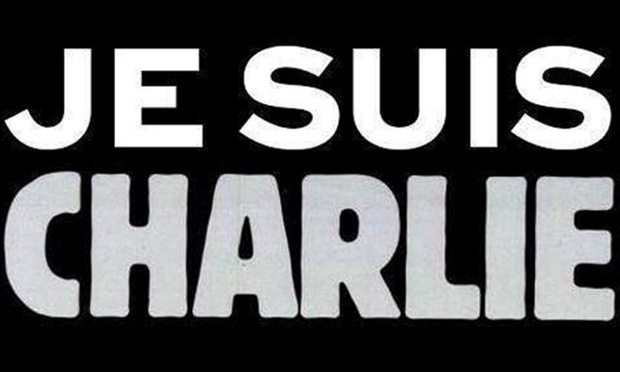An Overview of Charlie Hedbo Attack in Paris
January 27, 2015
On Wednesday, January 7th at 11:30, a black car drove up to an office building on Rue Nicolas-Appert in Paris. Two gunmen, masked, dressed in black and wielding Kalashnikov assault rifles got out of the car and invaded the building which serves as the headquarters for the satirical magazine, Charlie Hebdo.
Now identified as brothers Cherif and Said Kouachi, the gunmen killed caretaker Frederic Boisseau after demanding to know where the magazine’s offices were located. They then proceeded to force one of the magazine’s cartoonists, Corinne Rey, to enter the keypad entry code to a newsroom where a weekly meeting was being held.
Granted access to the newsroom, Cherif and Said shot and killed the editor, Stephane Charbonnier, their bodyguard, Franck Brinsolaro, and a group of eight other people consisting of four cartoonists, three editorial staff members and one guest invited to sit in on the meeting.
People in the building claimed to have heard “God is Great” and “We have avenged the Prophet Muhammad” being shouted in Arabic while the attack was being carried out.
After being informed of the occurrence, police arrived at 10 Rue Nicolas-Appert just as the gunmen were in the process of leaving the building. Blocked by a police car, the brothers opened fire on the vehicle before proceeding to find an alternate escape route. Workers who had ran to the rooftop for safety recorded the whole incident as it occurred.
Cherif and Said are said to have gone south before turning around on a northbound road. Street cameras reveal the the car had come to a stop and the gunmen got out of the vehicle before proceeding to shoot Ahmed Merabet, a police officer who was standing on a nearby sidewalk. Injured, Merabet fell to the ground, and one of the brothers then shot him dead from close range. Cherif and Said then drove off.
The car was later found abandoned about two miles north of Charlie Hebdo offices after having apparently gotten into an accident with another vehicle. Two Molotov cocktails and jihadist banners were discovered within.
The brothers then disappeared after stealing a second car.
As for the motive behind the killings, Cherif and Said are believed to have been offended by multiple covers of Charlie Hebdo that depicited cartoons criticizing Islam. As a result, many are seeing the attack as a direct attack on free speech.
“People have a right to say things,” says Theresa Leonardi, WHS history teacher. “But I also think that just because you can say anything, doesn’t mean you should. That magazine has made vicious attacks on all religions. But while it doesn’t excuse what the terrorists did, I do think people should sometimes be sensitive when it comes to making fun of other people’s religions. Was it a direct attack on free speech? To me yes and no.”
When asked how the attacks should affect Weedsport students, she says, “I hope that they make students more cognizant of what’s going on in the world, more aware also of how the world is becoming more and more interconnected. You can no longer say ‘Oh it’s their problem not ours’. I hope it makes them more thoughtful about the issue of free speech and how what they say affects other people.”
After the shootings, rallies broke out across all of France and copies of Charlie Hebdo have since sold out in some U.S. Cities.
Unfortunately, Leonardi says she believes that no matter how cautious the world will be, more and more attacks such as this one in Paris will occur in many other countries.
Be sure to take a look at Mrs. Brown’s article on the issue. After studying in Paris for a year, she offers personal insight into the Charlie Hebdo attacks.
